Learning to Filter Water—By Studying Manta Rays
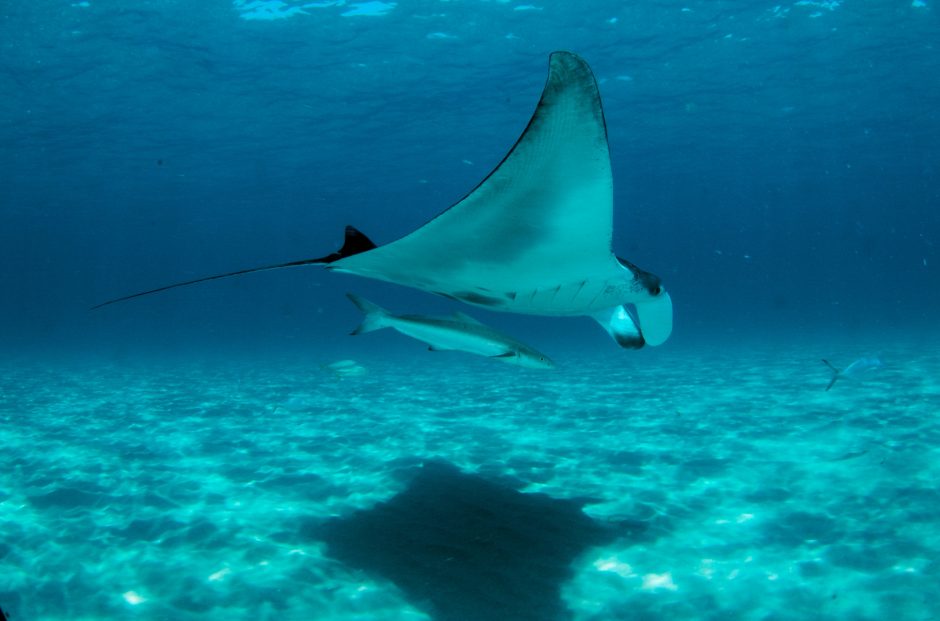 A ray swims with smaller fish. (Credit: Stephen Kajiura, via source)
A ray swims with smaller fish. (Credit: Stephen Kajiura, via source)Despite sometimes growing to a large size, manta rays feed on tiny zooplankton, microcrustaceans and mesoplankton with a unique filtration apparatus. Now, scientists are working to find out how the rays filter their food through seawater so efficiently with an eye toward revealing their secret.
The manta ray’s unique filtration method
Most filter feeders in the world’s oceans are sieve filters. These work by moving water past membranes with tiny pores in them that allow water molecules to pass through—but not tiny prey such as zooplankton. The same principle drains water from pasta in kitchens, for example.
However, manta rays are unique, as Oregon State University assistant professor of integrative biology Dr. James Strother explained to EM as he discussed his recent research.
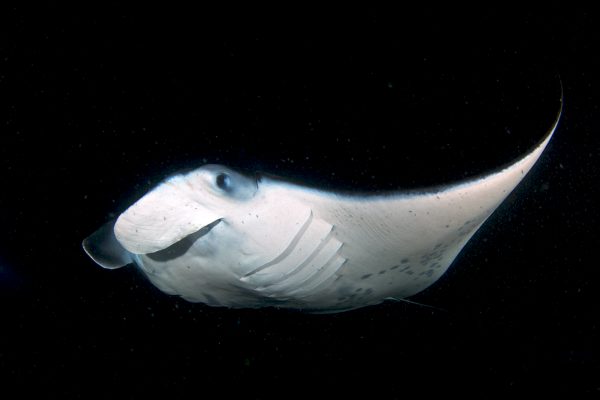
A manta ray. (Credit: Stephen Kajiura, via source)
“The geometry of the filtering apparatus is strikingly different from most filters, and it was this unique morphology that drove us to ask how this filter was working,” remarks Dr. Strother.
Along with co-author Dr. Misty Paig-Tran, who performed detailed morphological studies of the filtering apparatus, setting the stage for the project, Dr. Strother set out to find out what makes the filtration system different, and how to duplicate it.
“There are many different types of filters, but most filters are based on a small set of fundamental mechanisms, including sieve, hydrosol, and cyclonic filtration,” details Dr. Strother. “In sieve filtration, a particle suspension is passed through a barrier with pores and any particles larger than the pores become trapped. In a hydrosol filter, particles are captured when they adhere to the filter surfaces. Lastly, cyclonic filters work by rapidly rotating the fluid such that particles more dense than the fluid are flung to the periphery.”
Furthermore, filtration systems that appear quite different may utilize the same underlying mechanism.
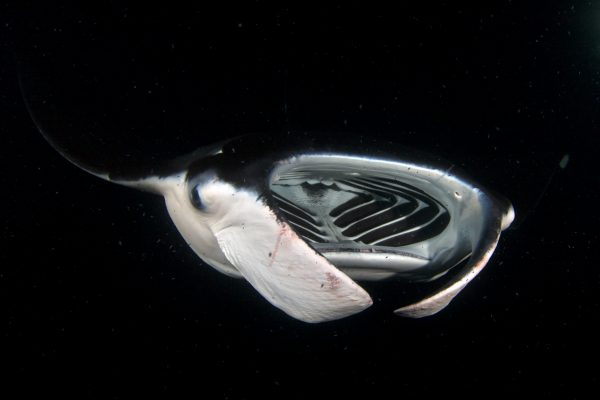
Open wide! Facing down a manta ray. (Credit: Stephen Kajiura, via source)
“For example, kitchen colanders and 0.2um membrane filters both principally rely on sieve filtration,” adds Dr. Strother.
However, the filtration system in the manta ray is singular.
“The filtration process in manta rays is interesting because it appears to utilize a fairly unique mechanism,” comments Dr. Strother. “As water flows through the filtering apparatus, it produces a complex flow pattern including small vortices trapped between the filter lobes. Water glides over the filter surface before interacting with these vortices and taking a sharp turn through the filter pores. Solid particles initially follow a similar trajectory but are not able to make the same sharp turns. Instead, the solid particles hit the filter surfaces and ricochet away from the filter. As a result, the filter is able to exclude solid particles without capturing them, so the filter stays clean and resists clogging.”
Taking a page out of nature’s book
Manta rays, which can have “wingspans” of more than 20 feet across, eat as they swim through the water, filtering out water and keeping plankton to digest. Although it’s not clear that this system can be adapted for other applications, scientists hope that this might be possible.
“Manta ray filters appear to be well optimized for filtering zooplankton from seawater, but this geometry may not be ideal for other applications,” states Dr. Strother. “We are currently exploring how the filtration process can be tuned by varying the flow conditions and filter geometry. These experiments will allow us to determine how the system should be modified in order to target different filtration requirements.”
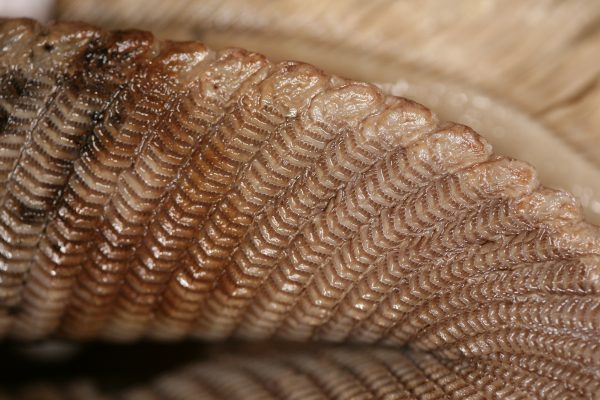
A close up view of the manta ray’s filtration system. (Credit: Misty Paig-Tran, via source)
The recent research revealed the basic filtering mechanism, and now the team will explore adapting it. For example, one possible application might be to use this kind of filter as part of a wastewater treatment protocol to remove microplastics pollution—especially if researchers can improve upon it.
“We do not know the full extent of how microplastics affect manta rays, but there is reason to believe that these animals ingest microplastics and may be harmed by associated toxins,” Dr. Strother describes. “Marine filter feeders are believed to be especially susceptible to microplastics, and both small invertebrate and large vertebrate filter feeders have been found to accumulate microplastics in their gut.”
Ironically, the manta ray’s unique filtration system is itself one reason the creature is under rising threat from commercial fisheries that supply consumers of traditional medicines that harvest the manta’s gill raker. They are also often caught unintentionally by fisheries targeting other species. The end result is that numbers of manta rays are dwindling, with the species currently listed by the International Union for Conservation of Nature (IUCN) as “vulnerable” to extinction.
Ultimately, the team hopes this work may help both humans who need clean water and manta rays trying to survive.
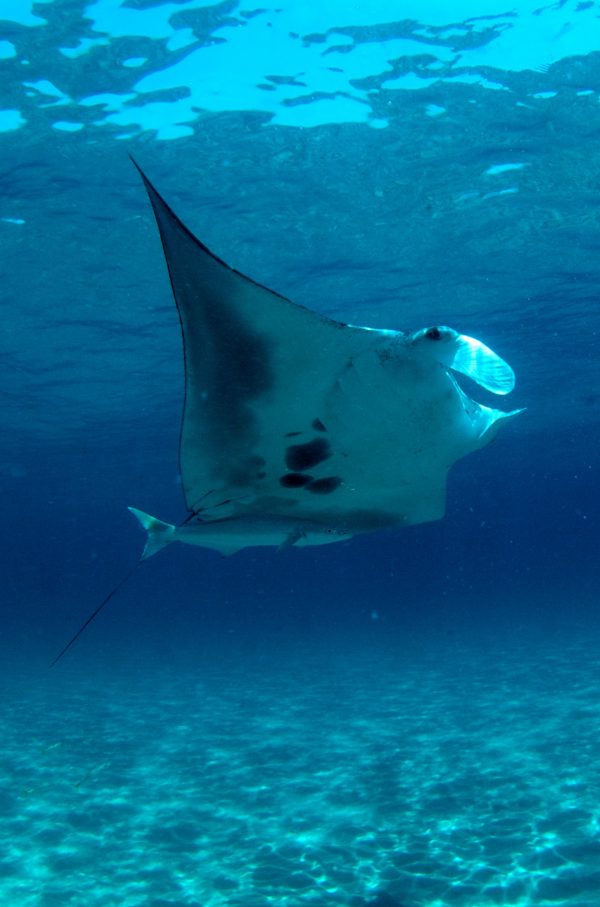
A ray in shallow waters. (Credit: Stephen Kajiura, via source)
“We are very excited about exploring potential applications of this filtration mechanism, but there is still a substantial amount of research and engineering needed before we have a market-ready solution,” comments Dr. Strother.




0 comments